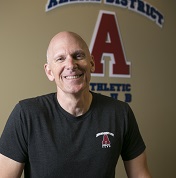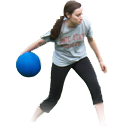
Returning to Exercise After Recovering from COVID-19: What to Know
- Sports medicine doctors at the Hospital for Special Surgery (HSS) recently published a list of recommendations for returning to exercise after living with mild to moderate COVID-19.
- The guidelines extend to everything from cardiac issues and gastrointestinal symptoms to those who had no discernible symptoms at all.
- They advise to take it slow and gradually reintroduce physical activity to your routine.
- They also suggest that you consult your doctor to devise the best-tailored plan for easing back into exercise.
All data and statistics are based on publicly available data at the time of publication. Some information may be out of date.
Now that we’ve passed the half-year mark of living with the COVID-19 pandemic, increasingly more is being understood about some of the long- and short-term ramifications of the virus.
From cardiac problems to lifelong lung damage to evidence of racial disparities in who’s getting affected more than others, much is still being learned about the various ways the new coronavirus is affecting people’s health.
For those who have been recovering from COVID-19, returning to “normalcy” in everyday life can be a challenge. It’s an ongoing conversation you’ll have to have with your doctors and medical team, assessing what kinds of lifestyle habits are and aren’t safe for your health at this time.
One of those key concerns is exercise.
For those readjusting to normal day-to-day activity after living with COVID-19, how safe is it to embrace physical activity and fitness, especially when so much is still unknown about how the virus affects one’s overall health?
New guidelines for embracing fitness after COVID-19
The Hospital for Special Surgery (HSS) Sports Medicine Institute in New York City recently published a set of guidelines and considerations for returning to exercise after living with mild to moderate COVID-19.
They outline a range of recommendations for people who experienced everything from musculoskeletal to gastrointestinal symptoms from the virus to those who seemed to have no known impact on their body at all.
Dr. Jordan D. Metzl, a sports medicine physician at HSS and lead author of the guidelines, told Healthline that a new disease like COVID-19 offers complications when crafting these kinds of recommendations.
Unlike conditions that have been “known about for decades, even centuries,” COVID-19 stands as something of an ongoing question mark.
More seems to be discovered and observed from week to week as the pandemic continues to affect the world.
“Generally, we want people to be active. I always recommend exercise — I’m a big believer in integrating the world of medicine and fitness,” he said. “I deeply believe in exercise as medicine and movement as medicine, and there is strong evidence for all that. But with this particular disease, there are real red flags making it different than others I’ve given advice for in the past.”
Metzl stresses that these recommendations from HSS aren’t set in stone — as more is discovered about the virus and the way it affects us, these guidelines about returning to physical activity will be adjusted and amended.
What are some of the guidelines? They touch on six key areas. For people with hematologic or blood symptoms, the guidelines recommend starting with low-intensity exercises and less sedentary behavior that will reduce blood clot risks.
Those who had respiratory symptoms like pneumonia are recommended to rest for at least a week after symptoms subside, gradually returning to physical activity with an emphasis on monitoring their breathing.
For people who have had cardiac, or heart, symptoms, the recommendation is to rest for around 2 to 3 weeks after the symptoms stop, while those who have myocarditis, or inflammation of the heart, should wait as much as 3 to 6 months before returning to some form of an exercise regimen.
Those who have been living with the gastrointestinal effects of COVID-19 — think vomiting, nausea, diarrhea, loss of appetite — they should keep tabs of their fluid and calorie intake while easing into their fitness patterns.
Additionally, individuals who had musculoskeletal symptoms like joint and muscle pain should also embrace a gradual return to exercise before they go back to their pre-COVID-19 workouts.
What about those who had no known symptoms at all?
Metzl says they should still gradually return to exercise. If you haven’t had any known symptoms for a full week, you can return to physical activity at 50 percent of your usual intensity.
Pay attention to your body in case any symptoms suddenly appear. Do only what you can handle.Why exercise is helpful
Many people — even those who haven’t received a COVID-19 diagnosis — have had difficulty fully embracing exercise and physical activity during the pandemic.
Sheltering at home, gym closures, and embracing a sedentary lifestyle have hindered many people’s exercise habits.
For those who have had COVID-19, there’s added concern of how to safely reengage with those habits without incurring additional harm to their overall health.
Metzl says if you listen to these guidelines and consult your physicians, there’s a way to reap the health benefits of exercise.
“There’s good evidence that there is a medicinal immune response around moderate exercise,” he added. “In general, we want people to exercise every single day. Exercise makes you healthy across the spectrum of human health.”
However, Metzl stresses there’s a caveat now with the pandemic.
“If you had COVID-19 and experienced any of these symptoms, that really flips the script on you, and you have to be much more careful about how you go back to activity,” he said.
Dr. Dennis A. Cardone, sports medicine specialist at NYU Langone Sports Health, says that given there’s such a vast range of experiences of people who were diagnosed with COVID-19, there’s no real one-size-fits-all recommendation.
Generally, he says that even separate from the virus, people who take time away from physical activity go on to quickly lose muscle strength, tone, and conditioning.
And it takes a long time to get those things back and for your body to readjust to that kind of activity.
Cardone says this also applies to people who have been recovering from an injury or some other long-term illness.
Easing back into fitness
Cardone, who wasn’t affiliated with the new guidelines, says the virus’s effects on cardiac health are particularly concerning.
He’s found that people who are middle-aged and older have seen high likelihoods of cardiac complications, heart inflammation, and heart arrhythmia.
He says it’s necessary that people with these symptoms address their cardiac issues first with a cardiologist and their regular doctor before engaging with mild to vigorous fitness behaviors.
But it’s not just an issue for older people.
Cardone says the NCAA is recommending that even college athletes who tested positive for COVID-19 should make sure they have their heart health checked out, and make sure they’re medically in the clear before returning to their sports.
He says one good rule to think about when returning to fitness after time away is to phase in fitness gradually on a week-to-week basis.
Start out doing just a small percentage of where you normally would be. By 4 weeks or so, gradually work your way to 100 percent your exercise capacity.
Dr. Karna Sarin, a critical care physician who’s part of Cleveland Clinic’s post-intensive care unit (ICU) recovery clinic, has worked with people who have experienced some of the most serious COVID-19 symptoms.
He echoes Cardone and Metzl in saying that the virus has affected people’s health in a wide variety of ways.
Sarin says before embracing any kind of activity, consult your doctor. They will help you devise a tailored plan to be active while still protecting your health.
“I would recommend getting the advice of your primary care provider and team of specialists who helped work with you during [COVID-19] before starting any sort of exercise program,” Sarin, who was also not a part of drafting HSS’s guidelines, told Healthline.
“Once you are clear to do so, it may be best to start in a slow fashion and eventually increase the amount of intensity and duration of exercise and activity you are doing,” he said.
“Listen to your body, and immediately stop and seek medical treatment if your condition worsens,” he added.
Sarin has worked with patients who, after receiving ICU care, have been somewhat apprehensive about returning to physical activity.
“Some patients have been concerned about this, and rightfully so,” he said. “As a healthcare community, we have to help them recover in the best way possible and listen to their particular needs. In the post-ICU clinic, we encourage them to proceed in baby steps to eventually get to their goal.”
When it comes to any general takeaway Metzl wants people to have from the recommendations, he says to take it slow.
“As sports medicine doctors, we want all of our patients to get out there and move, but this is one of the few times in our career where I’m really having to tell people to pump the breaks and pursue really gentle activity,” he stressed. “I want to make sure they have a very slow, gradual resumption of activity.”
Sports medicine doctors at the Hospital for Special Surgery (HSS) Sports Medicine Institute in New York City recently published a list of recommendations for returning to exercise after living with mild to moderate COVID-19.
The guidelines extend to everything from cardiac issues and gastrointestinal symptoms to those who had no discernible symptoms at all.
The overarching recommendation? Take it slow, and gradually reintroduce physical activity to your routine.
As always, they suggest that you consult your doctors and the specialists you might have worked with during your COVID-19 care and treatment to devise the best-tailored plan for easing back into exercise.




